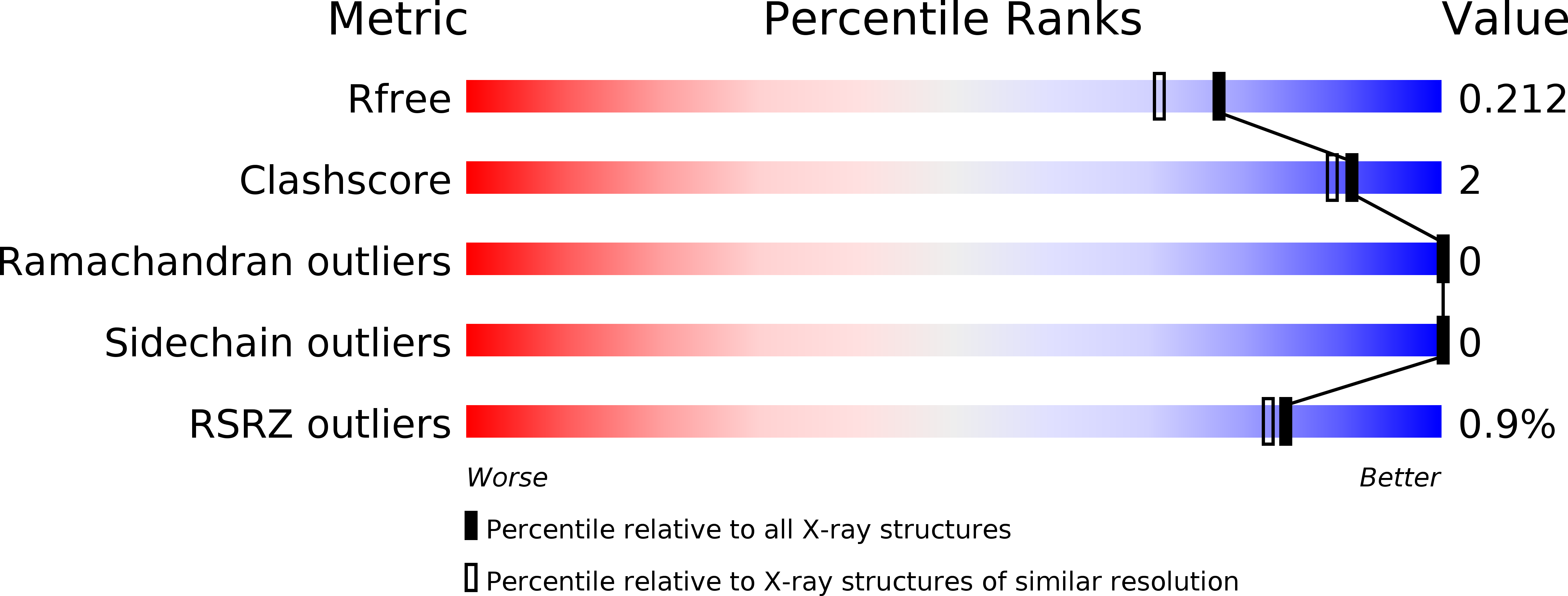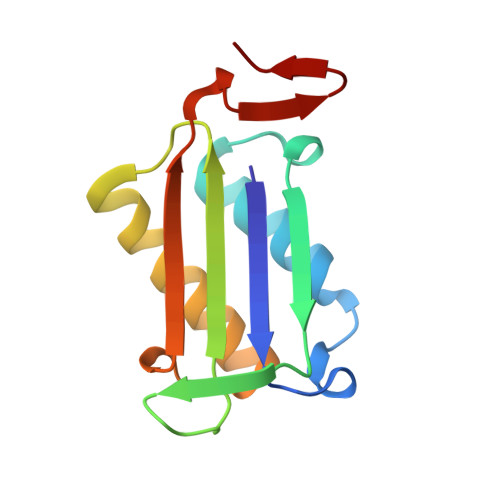Design, synthesis, and protein crystallography of biaryltriazoles as potent tautomerase inhibitors of macrophage migration inhibitory factor.
Dziedzic, P., Cisneros, J.A., Robertson, M.J., Hare, A.A., Danford, N.E., Baxter, R.H., Jorgensen, W.L.(2015) J Am Chem Soc 137: 2996-3003
- PubMed: 25697265
- DOI: https://doi.org/10.1021/ja512112j
- Primary Citation of Related Structures:
4WR8, 4WRB - PubMed Abstract:
Optimization is reported for biaryltriazoles as inhibitors of the tautomerase activity of human macrophage migration inhibitory factor (MIF), a proinflammatory cytokine associated with numerous inflammatory diseases and cancer. A combined approach was taken featuring organic synthesis, enzymatic assaying, crystallography, and modeling including free-energy perturbation (FEP) calculations. X-ray crystal structures for 3a and 3b bound to MIF are reported and provided a basis for the modeling efforts. The accommodation of the inhibitors in the binding site is striking with multiple hydrogen bonds and aryl-aryl interactions. Additional modeling encouraged pursuit of 5-phenoxyquinolinyl analogues, which led to the very potent compound 3s. Activity was further enhanced by addition of a fluorine atom adjacent to the phenolic hydroxyl group as in 3w, 3z, 3aa, and 3bb to strengthen a key hydrogen bond. It is also shown that physical properties of the compounds can be modulated by variation of solvent-exposed substituents. Several of the compounds are likely the most potent known MIF tautomerase inhibitors; the most active ones are more than 1000-fold more active than the well-studied (R)-ISO-1 and more than 200-fold more active than the chromen-4-one Orita-13.
Organizational Affiliation:
Department of Chemistry, Yale University , New Haven, Connecticut 06520-8107, United States.


















